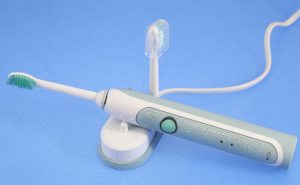 You probably have heard of the Breathalyzer, but probably not the Brushalyser. Now you have. The Brushalyser is at the intersection of oral hygiene and traffic safety: it’s a toothbrush which doubles as a portable breath alcohol test. But should you rely on your toothbrush to determine whether it’s safe for you to drive?
You probably have heard of the Breathalyzer, but probably not the Brushalyser. Now you have. The Brushalyser is at the intersection of oral hygiene and traffic safety: it’s a toothbrush which doubles as a portable breath alcohol test. But should you rely on your toothbrush to determine whether it’s safe for you to drive?
Why the Brushalyser Was Developed
The Brushalyser was developed by Direct Line, an insurance company in Bromley, England. The company sponsored research regarding the frequency of people driving the morning after a night of drinking. According to the study, participants who attended an event in the summer of 2023 drank an average of seven pints of beer or 1.5 bottles of wine.
The study also revealed that many participants drove the morning after, even though they felt like they were still under the influence of alcohol. According to Direct Line’s press release, “The breathalyser toothbrush aims to remind people they could be over the limit the morning after drinking, and ties breath testing seamlessly into Brit’s morning routines.”
How Portable Breath Testers Work
The Direct Line press release does not explain how the Brushalyser measures breath alcohol concentration. It simply says, “the light flashes red and vibrates if over the limit, and glows green if it’s safe to drive.” If it is like other portable breath testers, it uses either semi-conductors or fuel cells.
Semi-conductor technology is used in most portable breath testers sold to consumers. The semi-conductor reduces the flow of electricity when alcohol is present. The amount of electrical current reduced is used in an equation to determine the quantity of alcohol present in the breath sample.
Fuel cell technology is used in most portable breath testers used by law enforcement officers. The fuel cell oxidizes alcohol and converts it into an electrical current. The amount of electrical current created is used in an equation to determine the quantity of alcohol present in the breath sample.
Are Brushalyser Results Reliable?
Whether the Brushalyser uses a semi-conductor or a fuel cell, the results may not be reliable, as both technologies have problems with accuracy and precision. Breath testers using semi-conductor technology are prone to imprecise results due to electrical drift and inaccurate results due to temperature changes. Breath testers using fuel cell technology can yield imprecise results due to degradation of the electrode and inaccurate results due to measuring mouth alcohol in addition to breath alcohol. Both types of testers lack accuracy because compounds other than alcohol affect the amount of electrical current measured.
In Ohio OVI cases, test results from portable breath tests are not admissible as evidence. To be admissible in court, a breath test must be administered on an approved evidential breath testing instrument. Those instruments use infra-red spectroscopy; not semi-conductors or fuel cells.
Brush Your Teeth and Go (Back) to Bed
If, like the subjects in the Direct Line study, you feel like you are under the influence of alcohol the morning after a night of drinking, you should brush your teeth, but you should not rely on a toothbrush to decide whether it is safe to drive. Just don’t drive.
 Columbus OVI/DUI Attorney Blog
Columbus OVI/DUI Attorney Blog

